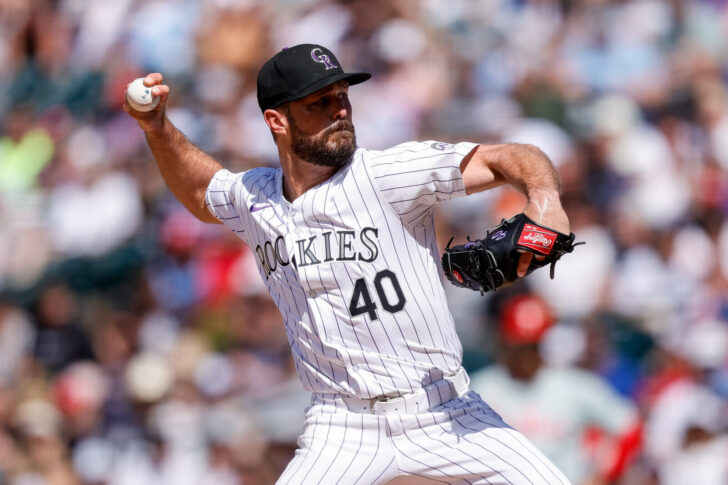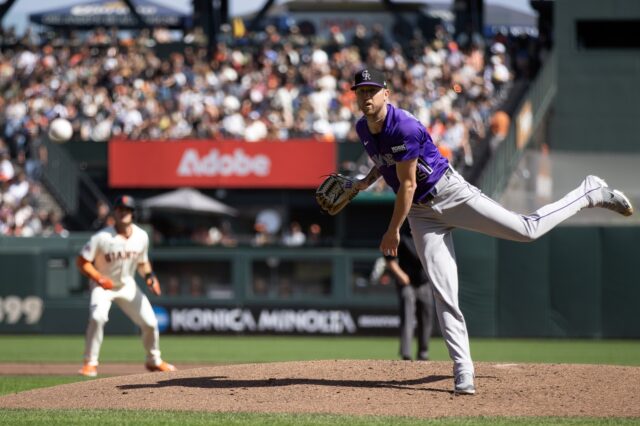Strike 2: With the occasional exception to the rule, the Colorado Rockies bullpen has been a flaming mess so far this season. They aren’t just blowing leads; they’re blowing big leads. With regularity.
For its part, the starting rotation has been okay. But one part of the pitching staff can’t really flourish without the other, so what’s a possible answer for a beleaguered group that doesn’t involve the sudden arrival of a set of superstar caliber arms?
How about going back to the future? Remember “piggybacking?”
We threw this out there late last season after all hope of contending was gone and only the development of young pitchers was left to play for. This season, that moment has arrived earlier, like on Opening Day, so we toss this out again: Deploying the once scoffed at idea of a four-man starting rotation that also includes pitch limits and a predetermined long reliever could help stabilize this pitching staff and help young pitchers development for the future.
For example, Pitcher A starts and works four, perhaps five innings with a limit of 75 pitches. He’s replaced by Pitcher B, who also has a pitch limit and is planned on for another three or four innings. If each guy does a reasonable job, that should get the Rockies much deeper into the game and give the short relief pitchers a respite. They should perform better with regular rest.
The benefits for a young starter are clear. Going only twice through the opponent’s batting order helps indoctrinate a kid into the bigs while limiting the prospects for bad things to happen; it lessens the stress and strain on a throwing arm, and throwing fewer pitches more often helps build better command.
Of course this would require the reshaping of the current pitching staff, which few would argue would be a bad thing.
At this moment, the Rockies have starters Austin Gomber, Dakota Hudson, Cal Quantrill, Ryan Feltner, Ty Blach and a guy who could fill the second role like Peter Lambert (recently sent to Triple-A) available. They’d need three more “starter” types. Remember, Kyle Freeland will eventually come off the injured list sometime in the next couple months, and so will German Marquez and maybe at some point Antonio Senzatela.
Even more intriguing is the anticipated arrival of young Double-A starting pitcher Carson Palmquist. Limiting him to twice through the order when he gets his first big league starts would be an ideal way to break him in, especially at Coors Field.
The Rockies deployed this plan more than a decade ago, and it was met with disdain from fans and the baseball establishment. But that was back when a starting pitcher was still expected to work deep into games and bullpens weren’t counted on to throw more than half the game almost every night. Depending on the Rockies (current) bullpen to that extent is a big part of what has Colorado on a record losing pace.
Sometimes drastic situations require drastic measures to overcome. While the Rockies would be the object of some level of scorn if they returned to piggybacking at any point, if it was successful, it would very quickly become a model for other teams looking for pitching solutions. Let’s face it, with the way starting pitchers are landing on the surgeons table at a record pace, any plan that helps keep guys healthier would not be scorned for very long.





